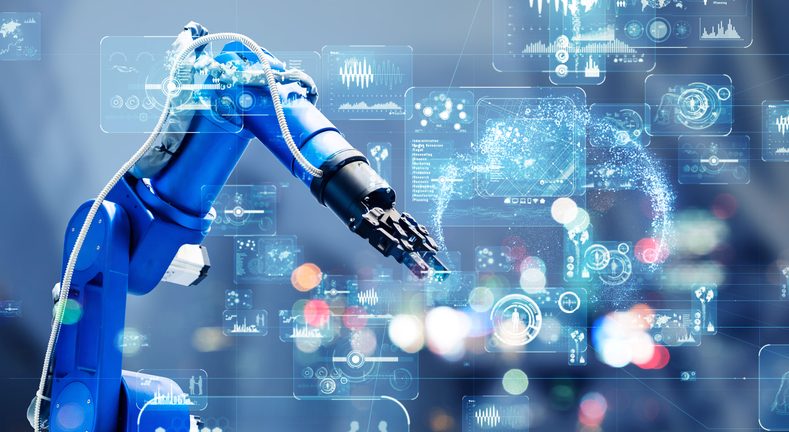The future of the supply chain is being shaped by artificial intelligence solutions like automation and robotics. But there are still many unknowns that need to be explored. This article will talk about automation and robots, specifically their effect on the future of supply chains.
Hopefully, this information can help you better understand the potential impacts on your company’s operation if automation becomes a more common part of manufacturing processes in the years ahead.
First, let’s discuss some common issues supply chains are facing daily –
Problems Faced by Supply Chain Management
Supply chain management can be tricky as it runs into problems all the time. The preferable way to deal with them is to prevent them before they arise.
Disruption due to global trade
In a political climate of unrest, things keep going back and forth, such as the passing of new tariffs, varying trade wars, amongst others. Supply chain managers need to be agile and ready to react by looking for sudden global supply chain environment changes.
The Need for Digitization
As customers become globally empowered, they expect quicker delivery and service, and supply chains become digitized to stay competitive. There is an ever-increasing need to gain visibility into your supply chain as old analog ways of data storage is quickly becoming redundant. The information received from this visibility is vital for enhancing the efficiency of the supply chain.
Choosing the Right Channels
The overwhelming number of options available for order and delivery channels is a challenge for the supply chain management. By gaining visibility into the supply chain, managers get a gold mine of data about choosing the best channels for operations and organizing the orders coming in from various regions to maintain the speed and efficiency of the supply chain.
Automation to The Rescue
As technology is always evolving, the world of supply chain automation is witnessing new trends set to improve the workflow in many ways, such as cost reduction, speedy operations, and higher accuracy.
For example, new pallet-handling systems have been found to cut shipment processing time by 50%.
Artificial intelligence platforms like HOLMES, RPA, virtual agents, machine learning, and others transform how SCM (supply chain management) is done by businesses today.
Here’s how artificial intelligence solutions such as automation help tackle the problems stated above.
Adaptable AI with Machine Learning – As supply chains are inherently data-rich, machine learning is needed to make the most of the knowledge derived from this data and scale up automation as per the rising demands from the customer or a change in warehouse settings. In addition, leading shippers and carriers are using data and machine learning to predict demand more efficiently. New rules-based routing can produce efficiencies of up to 25%.
Automation for Labour Shortage – the growth of online retailers and e-commerce has led to increased demand for labor. Customers expect same-day delivery, and companies are investing in automation rather than hiring employees. Not just frontline transactional purchasing, but many blue-collar jobs in warehousing, logistics, and distribution centers are being replaced by AI technologies such as driverless trucks with a human supervisor and automated bots.
Automation for Cost Reduction – As automation is introduced at several steps of the supply chain, logistics firms’ ability to flex with peak demand, take on heavier cargo and pick and pack individual products increases. McKinsey expects that, as automation proceeds, logistics costs might fall by up to 40%. Technology is also enabling more fluid asset sharing. It enables the unlocking of unused capacities in capital-intensive assets, such as trucks, trains, ships, and warehouses.
Predictive Analytics for Disaster Mitigation – Artificial intelligence solutions put you ahead of the game in times of trouble by eliminating the time lag caused by human monitoring and late reaction. Automated systems can place orders immediately for the parts needed from other partner companies when there is a problem with production. When the price of parts jumped due to a global slowdown and your system had already ordered them, suddenly your supply chain is saving you hundreds of thousands of dollars.
Leveraging Robots to Drive Value in Supply Chain
Supply chain robotics is a new concept in the industry that can potentially save money and increase productivity. The robots will “roam” warehouses, moving items from storage to shipping areas autonomously without human assistance. This is much more efficient than manual labor because of how quickly it completes tasks with little room for error or fatigue-related mistakes over longer periods.
Artificial intelligence solutions like Radio-frequency identification (RFID) technology on drones provides real-time inventory visibility in warehouses. Goods-to-person robots eliminate unnecessary walking by carrying carts and moving products between workers and stations.
Even though this technology is fairly young, there have already been several companies testing its efficacy throughout their supply chains, such as Amazon’s newest warehouse outside Baltimore, which has 1 million sq ft (10U) space inside and employs around 3,000 employees who work alongside 200 Kiva robots on an assembly line where they pick up products off shelves before taking them to inspection stations for quality control purposes.
By using robots in supply chains, companies can decrease costs and increase worker productivity. They also reduce the frequency of inventory checks and have increased access to difficult or dangerous locations. If businesses use autonomous robots to automate their warehouses, they can save millions in labor costs and increase revenue performance.
Conclusion
Artificial intelligence solutions are being used increasingly in the manufacturing industry, and it is predicted that they will soon be integrated into supply chains. This means different jobs – some workers may need to learn new skills while others will have their positions eliminated.
However, with increased automation comes a greater demand for certain types of labor, such as technical problem solvers, software developers, data scientists, and engineers who can maintain the robots themselves.
We hope this blog post has given you insight into how artificial intelligence solutions might affect your business in the future!








Add Comment